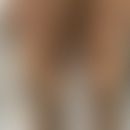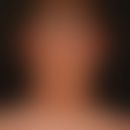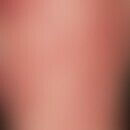HistoryThis section has been translated automatically.
Baller F, 1950
DefinitionThis section has been translated automatically.
Baller-Gerold syndrome (BGS) is a very rare disorder characterized by premature fusion of certain skull bones (craniosynostosis) and abnormalities of the arm and hand bones. People with Baller-Gerold syndrome have prematurely fused skull bones. These changes result in an abnormally shaped head, a protruding forehead, and bulging eyes with shallow sockets (ocular proptosis). Other characteristic facial features include hypertelorism, microstomia, and a saddle-shaped dysplastic nose. Furthermore, oligodactyly and malformed or absent thumbs.
People with Baller-Gerold syndrome may have a number of other signs and symptoms, including slow growth from infancy, short stature, and malformed or missing kneecaps (patellae). A few months after birth, signs of poikiloderma may appear, initially on the arms and legs, and later on other parts of the body (Van Maldergem L et al. 2022). In this respect, as in Rothmund-Thomson syndrome, increased epithelial neoplasms (spinocellular carcinomas, basal cell carcinomas) are to be expected.
You might also be interested in
EtiopathogenesisThis section has been translated automatically.
The syndrome is caused by a mutation in the RECQL4 gene.
LiteratureThis section has been translated automatically.
- Baller F (1950) Radius aplasia and inbreeding. Z. Menschl. Vererb. Konstitutionsl 29: 782-790.
- Cohen MM et al (1996) Is there a Baller-Gerold syndrome? (Editorial) Am. J Med Genet. 61: 63-64.
- Gerold M (1959) Fracture healing in a rare case of congenital anomaly of the upper limbs. (Healing of a fracture in an unusual case of congenital anomaly of the upper extremities). Zbl. Chir. 84: 831-834.
- Kääriäinen H et al. (1989) RAPADILINO syndrome with radial and patellar aplasia/hypoplasia as main manifestations. In: American journal of medical genetics 33: 346-351.
- Lu H et al (2011) Human RecQ helicases in DNA double-strand break repair. Front Cell Dev Biol9:640755.
- Megarbane A et al (2000) Overlap between Baller-Gerold and Rothmund-Thomson syndrome. Clin. Dysmorph. 9: 303-305.
- Siitonen HA et al. (2003) Molecular defect of RAPADILINO syndrome expands the phenotype spectrum of RECQL diseases. In: Human Molecular Genetics 21: 2837-2844.
- Van Maldergem L et al. (2006) Revisiting the craniosynostosis-radial ray hypoplasia association: Baller-Gerold syndrome caused by mutations in the RECQL4 gene. J Med Genet 43: 148-152.
- Van Maldergem L et al. (2022) In: Adam MP et al. GeneReviews [Internet]. Seattle (WA): University of Washington, Seattle; 1993-2022.
Incoming links (6)
Familial cancer syndrome; Rapadilino syndrome; Rothmund syndrome; Rothmund-thomson syndrome; Thomson syndrome; Tumor syndromes, hereditary;Outgoing links (1)
Poikiloderma (overview);Disclaimer
Please ask your physician for a reliable diagnosis. This website is only meant as a reference.




